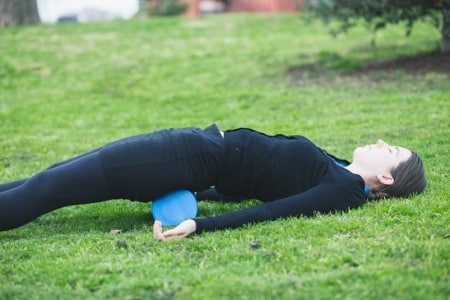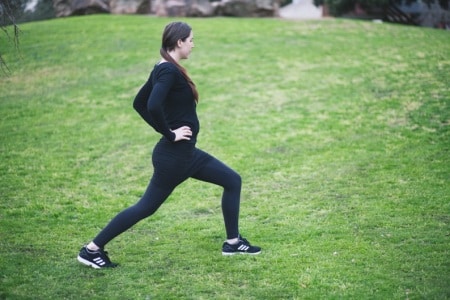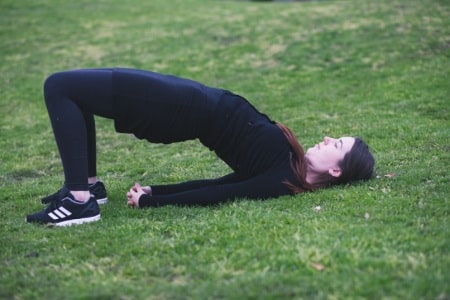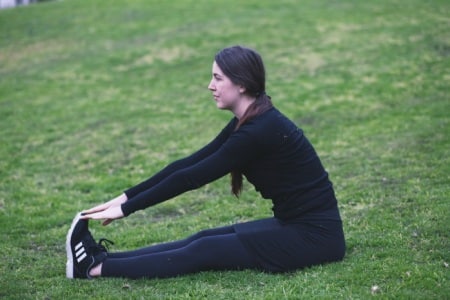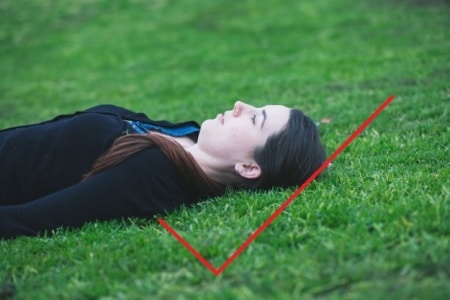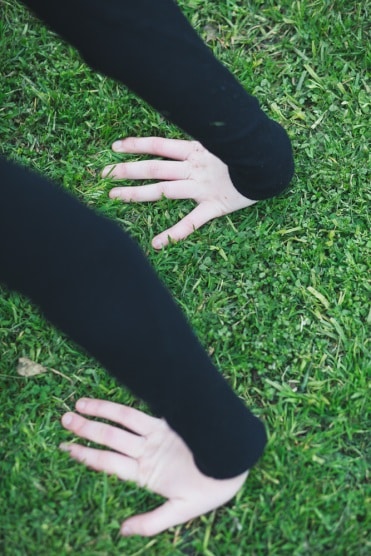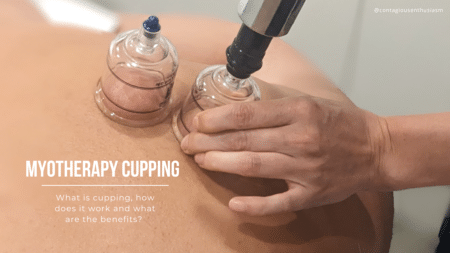Muscles at work
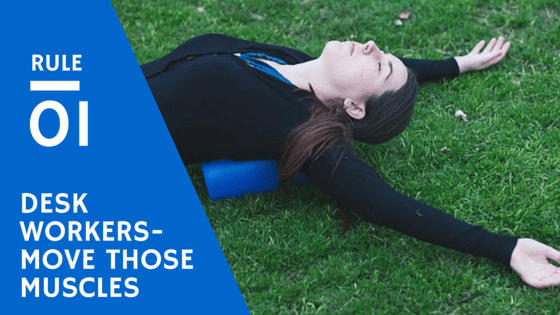
Our bodies are designed to move and be active, however in the modern world more and more people are confined to a desk. This has major implications on not only our muscles but overall health and wellbeing. Posture awareness, exercise and stretching can help counteract the effects of sitting at a desk for an 8 hour day. As a Myotherapist, I see many people who have poor posture due to their desk jobs. As a result this often leads to headaches, sore muscles and nerve entrapment, however with the following handy tips you can counteract these symptoms.
Sitting: The term “sitting is the new smoking” is a newly coined phrase for a good reason! The amount of time you spend sitting each day may not seem like much at first glance. But consider this; We sit to have breakfast, sit in the car to get to work, sit for long periods of time at work, drive home seated again, sit down to eat dinner, then maybe even sit down while watching TV before going to bed. Then the routine starts over the following day. When we are seated we become sedentary which leads to a build-up of lactic acid and calcium. Without movement, muscles become ‘atrophied’ meaning they lose the strength and ability to work at their full potential. Movement produces synovial fluid which helps joints move freely and easily. Without movement, this fluid is not formed and muscles and joints gradually lose their range of motion. Thus the importance of counteracting your work with exercise is essential in maintaining healthy, functioning muscles.
Management: Set an alarm every 30 minutes to stand up and walk around, even if for a short time. Getting your body moving frequently will help counteract the aches and pains you feel from sitting all day long. Stretch the hip flexors. The muscles at the front of the hips become short and tight when sitting all day, often compromising the position of the pelvis and surrounding structures. This often results in lower back pain as the glutes (buttocks muscles) become underactive, forcing the load towards the lumbar vertebrae. To passively stretch these muscles you can place a block or rolled up towel under the glutes and lie flat on your back (IMAGE 01). This will help the hip flexors extend towards the floor. Lunges – where the front of the hips are stretching behind the pelvis, will also help release these muscles (IMAGE 02). A bridge posture will stretch the hip flexors and strengthen the glutes at the same time (IMAGE 03). Ensure that you contract the glutes while holding the posture and do not continue if you feel pain. This stretching and strengthening exercise can do wonders for alleviating lower back pain.
High Heels: Often employees are asked to wear high heels, and whilst a lot of women enjoy wearing them, unfortunately their feet do not! High heels shorten the calf muscles and change the centre of gravity for those who wear them. Much like sitting, the pelvis is compromised and this will result in putting unnecessary strain on the lower back.
Management: The above stretches for sitting will help with lower back pain. Stretch the calves; whether it be reaching for your toes (IMAGE 04) or lowering one heel at a time off a step (IMAGE 05), stretching the calves is key after a day of wearing heels. Try to kick those heels off whilst sitting at the desk and place the heels flat to floor or kick them out whilst pointing, flexing and rolling around the ankle.
Forward head posture: When we are at a desk, it is very difficult to maintain good posture all day. The shoulders come forward, as does the head whilst the rest of our bodies slump behind us. Ideally, from a profile view our ears should be in line with the centre of our shoulders. However over time sitting at a computer our heads creep forward. The further forward our head comes from our neck and shoulders, the more weight this puts on the top of the thoracic spine, often resulting in that hump-back look we see in usually older people. The fascia surrounding the muscle tissue has to build up at the hinging point, in order to protect the joint from the excess weight of the head’s awkward forward position. Often this forward head posture can bring about headaches from the pull of tension on the muscles.
Management: Lie flat on your back and let the back of the head rest on the ground. If the head is already far forward, it will pull the head in a position where you are looking up and behind you (IMAGE 06 + 07). Try to bring the chin down and inward, if necessary you can place a thin pillow under the head. You can also stand with your back against the wall and practice making your head touch the wall by bringing the chin down and inward (IMAGE 08 + 09). This will strengthen the deep neck muscles which need to be activated in order to bring the head back to its ideal position. Stretch the neck by pulling the head gently; aim to align ear with shoulder, hold for 30 seconds (IMAGE 10), followed by the ear the armpit and holding 30 seconds (IMAGE 11).
Protracted shoulders: This is a common issue for all desk workers. Shoulders come forward and pain is felt in the upper back and neck regions, often resulting in headaches. The muscles between the spine and shoulder blades called the Rhomboids become over-stretched and weak, often resulting in painful trigger points, or knots. The shoulder blades are often pulled up by upper back and neck muscles while they are pulled forward by tight pectorals, or chest muscles. At the desk, your chest can become almost concave from hunching over a computer. They can become so tight that they pull at the muscles in the back further and further. Pain is commonly felt in the back of the body, but often the culprit is the short and tight muscles at the front.
Management: Stretch the pectorals (chest muscles). Whilst lying on your back, use foam roller or roll up a towel and place it down the middle of your spine. Bring your arms out wide until you feel a strong but not painful stretch. Hold here for 10-20 mins a day (IMAGE 12). What a perfect time to meditate or just to have some time for you! Another method is to get a tennis ball and place it on your chest just under your collar bone. Then with the opposite hand, push it into all the little knots you find (IMAGE 13). This can feel unpleasant depending on how gentle you are, but can has amazing effects! There are also reminder devices now that attach to your shirt and have a small buzzer alerting you if your posture has slumped. Alternatively, you could put a little sticker on your computer that serves as a reminder to sit up straight.
Carpal Tunnel Syndrome: When we are typing away at our computers, our hands are face down. We have two bones in our arms and when our palms are faced down, these cross over and the space at the wrist becomes smaller. There are 9 tendons that run through this space called the carpal tunnel. As we type away these muscles are working very hard and in the small space in the wrist they can become inflamed, causing carpal tunnel syndrome. Often people show symptoms of carpal tunnel, but can have an impingement further up the arm which refers pain to the wrist.
Management: Ergonomic keyboards are now available which sit semi-vertically so you can type with your thumbs facing up. This means the wrist bones will not be crossed which allows a bigger space for the tendons and less chance of carpal tunnel. Stretching the forearms and wrists is essential when working at a desk job, even if it is just 30 seconds per arm per day. Sit on your knees and bring your arms out in front of you. Place the back of your hands on the ground with palms up and fingers facing towards you and hold for 30 seconds (IMAGE 14). Turn the palms to face down but keep fingers pointing towards you, hold for 30 seconds (IMAGE 15).
Ergonomic set up: Ensure the monitor is the right height; the top 1/3 of the screen should sit eye level. The monitor should be 50-60cm away. The wrist position should be neutral. The mouse should be adjacent to the keyboard and the arm must not be outstretched. Knees bent at a 90 degree angle and place feet flat on the floor.
Ensure you are drinking lots of water throughout the day to keep hydrated (this is a sneaky way of reminding yourself to get up and walk to the toilet more often)! Have some healthy snacks such as nuts on your desk to keep you energised and your metabolism kicking whilst you’re sitting at your desk. Try and remember to take deep nourishing breaths into the diaphragm to keep enough oxygen flowing to the brain.
Hopefully these tips help with a happier body that can counteract computer posture!
By Claire Adamson (Myotherapist)
